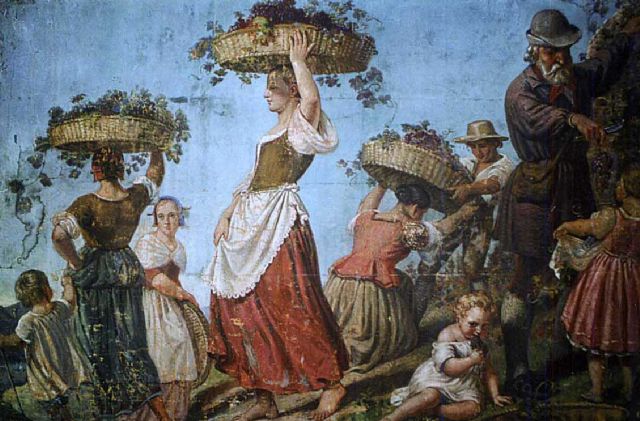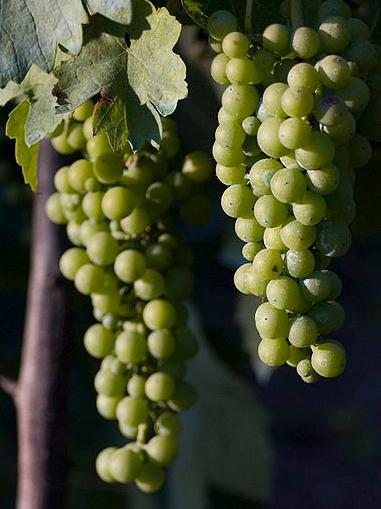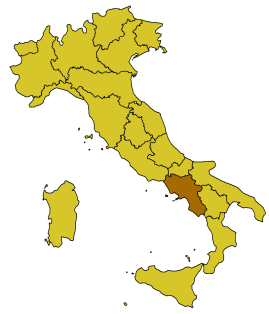|
Verdeca
Verdeca is a white Italian wine grape variety that is primarily grown in Apulia in southern Italy where ampelographers believe that the grape may have originated. In Apulia, it is one of the main grapes in the ''Denominazione di origine controllata'' wines of Locorotondo DOC and Martina Franca DOC along with Bianco d'Alessano. In Campania, it is grown on the slopes of Mount Vesuvius where it used as a blending variety with Falanghina, Coda di volpe and Greco in both the white wines and the sweet dessert wine of the region, Lacryma Christi. It is also a minor component used in the some vermouth production.J. Bastianich & D. Lynch ''Vino Italiano'' pg 297, 312-316, 401 Crown Publishing 2005 J. Robinson ''Jancis Robinson's Guide to Wine Grapes'' pg 194 Oxford University Press 1996 DOC wines Verdeca is a minor blending component in several DOCs central and southern Italy but some of the more notable DOCs the grape can be found in include:P. Saunders ''Wine Label Language'' pp ... [...More Info...] [...Related Items...] OR: [Wikipedia] [Google] [Baidu] |
Bombino Bianco
Bombino bianco is a white Italian wine grape variety planted primarily along Italy's Adriatic coast line, most notably in Apulia. The vine is prone to high yields and often produces neutral flavor wines.J. Robinson ''Jancis Robinson's Wine Course'' (Third Edition), p. 100, Abbeville Press 2003 The grape is known under many synonyms throughout Italy including ''Debit'' and ''Pagadebit'', names which came from the grape's reputation for being a high yielding and reliable crop for vineyard owners to grow that would assure them that on each vintage they could pay off their debts.Oz Clarke, ''Encyclopedia of Grapes'', p. 45, Harcourt Books 2001 Shelley Lindgren, Matthew Accarrino, Kate Leahy 'SPQR: Modern Italian Food and Wine'' pg 164, Random House Digital, Inc., Oct 16, 2012 The exact origins of the grape are unknown, with early wine texts speculating that the grape may have originated in Spain. Today most ampelographers believe that the grape is indigenous to southern Italy, wi ... [...More Info...] [...Related Items...] OR: [Wikipedia] [Google] [Baidu] |
Bianco D'Alessano
''Bianco d'Alessano'' is a white Italian wine grape variety that is grown in the Apulia region of southern Italy, where it is often blended with Verdeca. In the early 21st century, the grape was planted in the South Australian wine region of Riverland where varietal examples of ''Bianco d'Alessano'' has won wine competition awards as an "Alternative Variety" (as opposed to an "International Variety"). In Italy, the grape has also been historically used in the production of vermouth.J. Robinson, J. Harding and J. Vouillamoz ''Wine Grapes - A complete guide to 1,368 vine varieties, including their origins and flavours'' pg 103 Allen Lane 2012 History Ampelographers believe that ''Bianco d'Alessano'' is native to southern Italy, although its exact place of origin is not yet known. The grape has a long history of cultivation in Apulia, and in 2008 DNA analysis showed that the Iuvarello grape that has historically been grown in Calabria was, in fact, ''Bianco d'Alessano''. Viticult ... [...More Info...] [...Related Items...] OR: [Wikipedia] [Google] [Baidu] |
Fiano (grape)
Fiano is a white Italian wine grape variety that is grown primarily in the Campania region of southern Italy and on the island of Sicily. In Campania, this fairly strong flavored white wine grape is particularly noted around Avellino where the ''Denominazione di origine controllata e Garantita'' (DOCG) wine of Fiano di Avellino is produced.Berry Bros. & Rudd - Fiano Grape Variety . The grape has a long history in the Campanian region and is believed to have been the grape behind the ancient Roman wine ''Apianum''. Even today, the name ''Apianum'' is permitted to appear on |
Grape Variety
This list of grape varieties includes cultivated grapes, whether used for wine, or eating as a table grape, fresh or dried (raisin, currant, sultana). For a complete list of all grape species including those unimportant to agriculture, see Vitis. The term ''grape variety'' refers to cultivars rather than actual botanical varieties according to the International Code of Nomenclature for Cultivated Plants, because they are propagated by cuttings and may have unstable reproductive properties. However, the term ''variety'' has become so entrenched in viticulture that any change to using the term ''cultivar'' instead is unlikely. Single species grapes While some of the grapes in this list are hybrids, they are hybridized within a single species. For those grapes hybridized across species, known as interspecific hybrids, see the section on multispecies hybrid grapes below. ''Vitis vinifera'' (wine) Red grapes White grapes Rose Grapes ''Vitis vinifera'' (table) ... [...More Info...] [...Related Items...] OR: [Wikipedia] [Google] [Baidu] |
Gravina In Puglia
Gravina in Puglia (; nap, label= Barese, Gravéine ; la, Silvium; grc, Σιλούϊον, Siloúïon) is a town and ''comune'' of the Metropolitan City of Bari, Apulia, southern Italy. The word ''gravina'' comes from the Latin ''grava'' or from the messapic ''graba'', with the meaning of ''rock'', ''shaft'' and ''erosion of bank river''. Other words that share the same root are ''grava'', ''gravaglione'' and ''gravinelle''. Alternatively, when the emperor Frederick II went to Gravina, because of the large extension of the lands and for the presence of wheat, he decided to give to it the motto ''Grana dat et vina.'', that is to say ''It offers wheat and wine.''. Gravina is the home of the Alta Murgia National Park. History Thanks to its strategic position, Gravina has a very ancient history. Its territory has been inhabited since the Paleolithic, due to the high presence of water and woods. The largest remains date back to the Neolithic. The oldest settlements have been identifi ... [...More Info...] [...Related Items...] OR: [Wikipedia] [Google] [Baidu] |
Greco Di Tufo
Greco is an Italian wine grape that may be of Greek origin. The name relates to both white ''(Greco bianco)'' and black ''(Greco nero)'' grape varieties. While there is more land area dedicated to ''Greco nero'', the ''Greco bianco'' is the grape most commonly referred to by "Greco". In the Campania region it is used to produce the ''Denominazione di Origine Controllata e Garantita'' (DOCG) wine ''Greco di Tufo''. In Calabria, it is used to make the ''Denominazione di Origine Controllata'' (DOC) wine ''Greco di Bianco''. The name "Greco" is sometimes used as a synonym for several varieties of supposed Greek origins-most notably Trebbiano.J. Robinson ''Jancis Robinson's Wine Course'' Third Edition pg 112 Abbeville Press 2003 History The ancestor of the ''Greco'' vine may have been brought to southern Italy more than 2,500 years ago by ancient Greek settlers. Historians and Italian growers have speculated that the grape may have been a blending component in the ancient Roman ... [...More Info...] [...Related Items...] OR: [Wikipedia] [Google] [Baidu] |
Lacryma Christi
Lacryma Christi () or Lachryma Christi of Vesuvius is the name of a Neapolitan type of wine produced on the slopes of Mount Vesuvius in Campania, Italy. White Lacryma Christi is made mainly from Verdeca and Coda di Volpe grapes, with smaller proportions of Falanghina, CaprettoneJ. Robinson, J. Harding and J. Vouillamoz ''Wine Grapes - A complete guide to 1,368 vine varieties, including their origins and flavours'' pg 185 Allen Lane 2012 and Greco di Tufo included. Red Lacryma Christi is made from Piedirosso and Sciascinoso grapes. It is also, as archaeologists have discovered, the nearest equivalent to wine drunk by the Ancient Romans, having analysed microscopic residue left on the taps of the casks. Origins of name The name Lacryma Christi comes from an old myth that Christ, crying over Lucifer's fall from heaven, cried his tears on the land and gave divine inspiration to the vines that grew there. The sides of Vesuvius are deeply scarred by past lava flows, and its lowe ... [...More Info...] [...Related Items...] OR: [Wikipedia] [Google] [Baidu] |
Greco (grape)
Greco is an Italian wine grape that may be of Greek origin. The name relates to both white ''(Greco bianco)'' and black ''(Greco nero)'' grape varieties. While there is more land area dedicated to ''Greco nero'', the ''Greco bianco'' is the grape most commonly referred to by "Greco". In the Campania region it is used to produce the ''Denominazione di Origine Controllata e Garantita'' (DOCG) wine ''Greco di Tufo''. In Calabria, it is used to make the ''Denominazione di Origine Controllata'' (DOC) wine ''Greco di Bianco''. The name "Greco" is sometimes used as a synonym for several varieties of supposed Greek origins-most notably Trebbiano.J. Robinson ''Jancis Robinson's Wine Course'' Third Edition pg 112 Abbeville Press 2003 History The ancestor of the ''Greco'' vine may have been brought to southern Italy more than 2,500 years ago by ancient Greek settlers. Historians and Italian growers have speculated that the grape may have been a blending component in the ancient Roman "c ... [...More Info...] [...Related Items...] OR: [Wikipedia] [Google] [Baidu] |
Gravina DOC
Gravina in Puglia (; nap, label= Barese, Gravéine ; la, Silvium; grc, Σιλούϊον, Siloúïon) is a town and ''comune'' of the Metropolitan City of Bari, Apulia, southern Italy. The word ''gravina'' comes from the Latin ''grava'' or from the messapic ''graba'', with the meaning of ''rock'', ''shaft'' and ''erosion of bank river''. Other words that share the same root are ''grava'', ''gravaglione'' and ''gravinelle''. Alternatively, when the emperor Frederick II went to Gravina, because of the large extension of the lands and for the presence of wheat, he decided to give to it the motto ''Grana dat et vina.'', that is to say ''It offers wheat and wine.''. Gravina is the home of the Alta Murgia National Park. History Thanks to its strategic position, Gravina has a very ancient history. Its territory has been inhabited since the Paleolithic, due to the high presence of water and woods. The largest remains date back to the Neolithic. The oldest settlements have been ident ... [...More Info...] [...Related Items...] OR: [Wikipedia] [Google] [Baidu] |
Martina Franca DOC
Martina Franca, or just Martina ( Martinese: ), is a town and ''municipality'' in the province of Taranto, Apulia, Italy. It is the second most populated town of the province after Taranto, and has a population (2016) of 49,086. Since 1975, the town has hosted the annual summer opera festival, the Festival della Valle d'Itria.''Festival della Valle d'Itria'' Official Website History Jewish presence In 1495 one third of the population of Martina was made of practising Jews or Jews converted to Christianity. The escape involved one third of the population: 150 to 200 families (at least one thousand people). Among the privileges granted the city council of Martina in 1495, King Frederick of Aragon forbade Jews and Crypto-Jews and Neofiti to press ...[...More Info...] [...Related Items...] OR: [Wikipedia] [Google] [Baidu] |
Locorotondo DOC
Locorotondo ( Barese: ) is a town and municipality of the Metropolitan City of Bari, Apulia, southern Italy, with a population of about 14,000. It is situated between Martina Franca and Alberobello in the Valle d'Itria, a green stretch of countryside dotted with the famous whitewashed cone-roofed trulli houses. Locorotondo is listed as one of the most beautiful villages in Italy and it has been awarded the Orange Flag of the Touring Club of Italy due to the harmony of its shapes and the accessibility of the old town, as it can be easily visited on foot. It is an intricate network of little streets lined with old buildings and it is known for its typical houses called "''Le Cummerse''", which have a regular geometric shape and a sloping roof made of two different layers of limestone slabs. These dwellings have nowadays been renovated and offered to visitors in the form of scattered hotels. History The site has been settled since ancient times, as testified by archaeological fi ... [...More Info...] [...Related Items...] OR: [Wikipedia] [Google] [Baidu] |
Locorotondo
Locorotondo ( Barese: ) is a town and municipality of the Metropolitan City of Bari, Apulia, southern Italy, with a population of about 14,000. It is situated between Martina Franca and Alberobello in the Valle d'Itria, a green stretch of countryside dotted with the famous whitewashed cone-roofed trulli houses. Locorotondo is listed as one of the most beautiful villages in Italy and it has been awarded the Orange Flag of the Touring Club of Italy due to the harmony of its shapes and the accessibility of the old town, as it can be easily visited on foot. It is an intricate network of little streets lined with old buildings and it is known for its typical houses called "''Le Cummerse''", which have a regular geometric shape and a sloping roof made of two different layers of limestone slabs. These dwellings have nowadays been renovated and offered to visitors in the form of scattered hotels. History The site has been settled since ancient times, as testified by archaeological fi ... [...More Info...] [...Related Items...] OR: [Wikipedia] [Google] [Baidu] |







.jpg)

